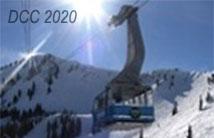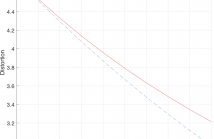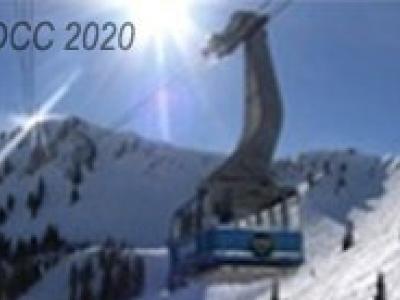
The Data Compression Conference (DCC) is an international forum for current work on data compression and related applications. Both theoretical and experimental work are of interest. Visit website.

- Read more about The Exponential Distribution in Rate Distortion Theory: The Case of Compression with Independent Encodings
- Log in to post comments
In this paper, we consider the rate-distortion problem where a source X is encoded into k parallel descriptions Y1, . . . , Yk, such that the error signals X - Yi, i = 1, . . . , k, are mutually independent given X. We show that if X is one-sided exponentially distributed, the optimal decoder (estimator) under the one-sided absolute error criterion, is simply given by the maximum of the outputs Y1, . . . , Yk. We provide a closed-form expression for the rate and distortion for any k number of parallel descriptions and for any coding rate.
- Categories:
 94 Views
94 Views
- Read more about Non-Binary Robust Universal Variable Length Codes
- Log in to post comments
We extend the binary Fibonacci code to $d$-ary codes, with $d\ge 2$.
This is motivated by future technological developments in which the basic unit of storage will not be just a 2-valued bit, but possibly an element that is able to distinguish between $d$ different values.
The proposed codes are prefix-free, complete and more robust than Huffman codes. Experimental results illustrate that the compression efficiency of non-binary Fibonacci codes are very close to the savings achieved by the corresponding non-binary Huffman coding of the same order.
- Categories:
 29 Views
29 Views
We extend the binary Fibonacci code to $d$-ary codes, with $d\ge 2$.
This is motivated by future technological developments in which the basic unit of storage will not be just a 2-valued bit, but possibly an element that is able to distinguish between $d$ different values.
The proposed codes are prefix-free, complete and more robust than Huffman codes. Experimental results illustrate that the compression efficiency of non-binary Fibonacci codes are very close to the savings achieved by the corresponding non-binary Huffman coding of the same order.
- Categories:
 40 Views
40 Views
- Read more about Flow-Guided Temporal-Spatial Network for HEVC Compressed Video Quality Enhancement
- Log in to post comments
In this work, a flow-guided temporal-spatial network (FGTSN) is proposed to enhance the quality of HEVC compressed video. Specially, we first employ a motion estimation subnet via trainable optical flow module to estimate the motion flow between current frame and its adjacent frames. Guiding by the predicted motion flow, the adjacent frames are aligned to current frame. Then, a temporal encoder is designed to discover the variations between current frame and its warped frames. Finally, the reconstruction frame is generated by training the model in a multi-supervised fashion.
- Categories:
 95 Views
95 ViewsAdaptive HTTP streaming is the preferred method to deliver multimedia content in the internet. It provides multiple representations of the same content in different qualities (i.e. bit-rates and resolutions) and allows the client to request segments from the available representations in a dynamic, adaptive way depending on its context. The growing number of representations in adaptive HTTP streaming makes encoding of one video segment at different representations a challenging task in terms of encoding time-complexity.
- Categories:
 289 Views
289 Views
Modern video codec uses arithmetic coding for entropy coding. The arithmetic coding asymptotically achieves the entropy bound provided the true probability distribution. Hence the compression efficiency heavily relies on the ability to capture the time-variant probability model in video signals. Variants of first-order linear probability model update schemes have been used in recent generation video codecs. Built on top of those, a multimodal estimation scheme that forms a higher order probability model update has been proposed in this work.
slide_dcc.pdf
- Categories:
 94 Views
94 Views
- Read more about Binary Representation and High Efficient Compression of 3D CNN Features for Action Recognition
- Log in to post comments
- Categories:
 43 Views
43 Views
- Categories:
 102 Views
102 Views
- Read more about Convolutional Neural Network-Based Coefficients Prediction for HEVC Intra-Predicted Residues
- Log in to post comments
- Categories:
 39 Views
39 Views
- Read more about Video-based compression for plenoptic point clouds
- Log in to post comments
DCC_poster.pdf
- Categories:
 22 Views
22 Views